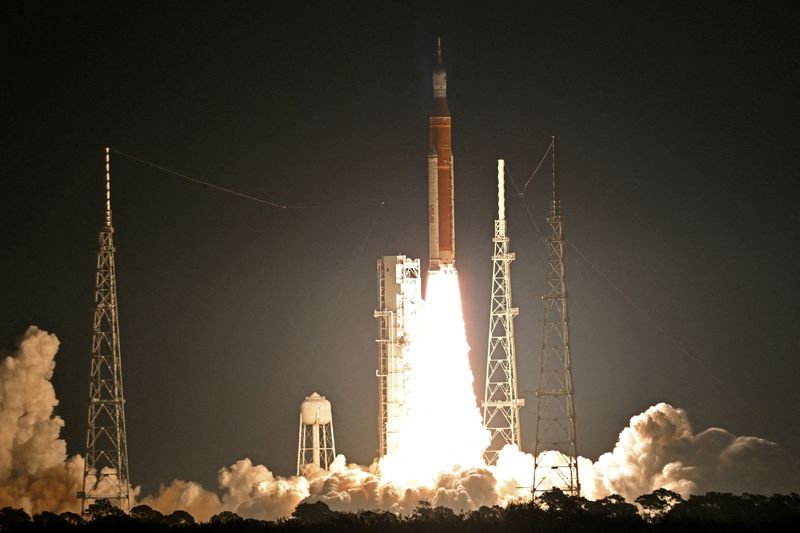By Will Dunham
WASHINGTON (Reuters) - With the help of mannequins named Helga and Zohar and sensors placed inside a spacecraft, scientists have collected valuable data about radiation exposure for astronauts outside Earth's sheltering magnetic field and gained insights on how to better protect them in long space journeys like one to Mars.
Researchers have released initial measurements of radiation levels experienced inside NASA's Orion spacecraft during its 25-day uncrewed Artemis I mission in 2022 around the moon and back to Earth. Continuous radiation data was obtained using instruments including NASA's HERA and the European Space Agency's EAD sensors.
The danger posed by radiation is a major concern that must be addressed if astronauts are to carry out long-term missions beyond Earth's orbit. The Artemis program aims to return astronauts to the lunar surface this decade and establish a base there as a prelude to future human exploration of Mars.
Sources such as galactic cosmic rays and particles shot through space during solar flares may place astronauts at high risk for radiation sickness, increased lifetime cancer risk, central nervous system issues and degenerative diseases.
Helga and Zohar, designed to represent human female bodies, were in the Orion capsule as stand-ins for astronauts, with built-in sensors measuring radiation exposure for their skin and internal organs. Zohar donned a radiation protection vest. Helga wore no protection.
"Helga and Zohar are 'radiation phantoms' - sophisticated mannequins that mimic the human body's response to radiation, equipped with sensors throughout to measure dose rates across various organs," said physicist Stuart George of the Space Radiation Analysis Group at NASA's Johnson Space Center in Houston, one of the authors of the study published in the journal Nature.
"These phantoms were designed to represent female bodies, as women typically have a higher sensitivity to radiation than men. The data collected from these phantoms provided valuable insights into how radiation is deposited across the body, particularly during the Van Allen belt transits and interplanetary flight," George added.
Two regions of radiation, called the Van Allen belts, surround Earth.
"Currently we are working on final data evaluation for Helga and Zohar, and the full data set will come out in the next months," including about the protection efficiency of Zohar's vest, said radiation physicist and study lead author Thomas Berger of the Institute of Aerospace Medicine at the German Aerospace Center in Cologne.
The areas inside the capsule designed to have the most radiation shielding, including a "storm shelter" for astronauts during space weather events like solar flares, were found to provide up to four times more protection than the spacecraft's least shielded areas. This validated the design for future missions, Berger said.
Exposure inside Orion to galactic cosmic rays - energetic particles that traverse the universe - was about 60% lower than exposure measured aboard previous uncrewed interplanetary probes, showing the benefit of a spacecraft designed for radiation shielding.
"These interplanetary cosmic rays are interesting because they form the majority of the exposure for long-term spaceflights, so this measurement is important for long stays on the moon and future transits to Mars," George said.
Orion's orientation during flight affected radiation exposure, which dropped by half when the spacecraft made a 90-degree turn flying past the inner Van Allen belt.
"This is because the Van Allen belt radiation is quite directional, and the flip put more shielding into the path of the radiation," George said.

Earth's magnetic field provides a protective envelope around the planet against space radiation. The International Space Station orbits within it. During the Artemis I mission, Orion traveled farther than any other spacecraft built for people, venturing well past the magnetic field.
"We have a lot of measurements for radiation exposure on crewed missions in low-Earth orbit, but very few for those out beyond the protection offered by Earth's magnetic field. Those we do have were performed by planetary science missions where the radiation shielding was very much lighter than on a crewed vehicle like those used for Artemis," George said.